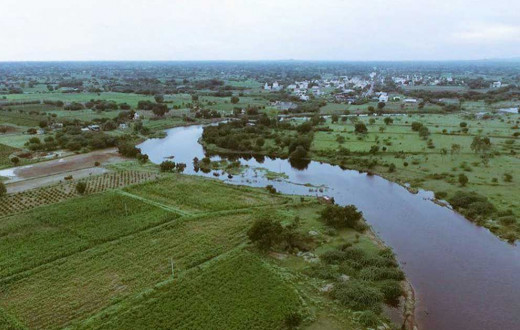The villagers in Satara region have exhibited an excellent show of community-driven development, power of unity, and given the rest of India a path to sustainable development. Here is an inspirational journey of Satara from being drought-hit to being water-sufficient, with the help and guidance of the Youth Leadership Training Programs.
Recently, a team of experts from our Bangalore International Center visited Satara. This Maharashtra district is historically renowned for its rich heritage. Sadly, the district has been making news for severe drought, farmers suicide and reduced farm produce. Crisis loomed large in 2015 when the Maharashtra government declared drought in thousands of villages and Satara was one of the heavily affected regions. Drought wasn’t new to Maharashtra, but the impact of recent droughts had been manifold, with several villagers relying heavily on water tankers and the farmers had a sordid tales to narrate. Drought paralyzed the lifestyle of Satara district.
However, all hope was not lost. An empowered individual is unstoppable - yes. And imagine, what happens when these empowered individuals get together? It results into an empowered community, which then resolves to bring about the desired change - all by their efforts and hard work. Satara experienced this force, and as a testimony to this are these incredibly inspiring tales from Satara villages that our team found out.
For Man taluka, Dahiwadi, Bidal and Jayagaon region, things have changed enormously, for the better. These villages are now water-sufficient and who do we credit this sustainable achievement to? It’s the communities there, led and guided by the Youth Leadership Training Programs. The villagers in these regions have exhibited an excellent show of community-driven development, power of unity, and given the rest of India a path to sustainable development.
Major occupation of people in Satara is farming and The Art of Living has been working in the district for water conservation projects benefiting farmers, agriculture, and agri-business, resulting in reverse migration, de-addiction and education in the village.
Watch the change unfold here: Villagers save Satara from drought
Highlights of the video
- Drought had left Man taluka heavily dependent on tankers. Its 66 villages needed at least 166 tankers per day to meet the demand of domestic water needs. The government coughed up over Rs.9 crore for these tankers. Today, Man taluka is tanker-free.
- Crores that could have been spent from the government coffers have been saved. It took efforts of our volunteers, commitment of our Youth Leadership Training Program leaders, community participation to change the future of Man taluka. It is water-sufficient.
- When the state government declared drought in Satara, for Dahiwadi villagers crisis loomed large. It was nothing but an official announcement of a persistent problem. Villagers who once worried about their future are, today, marching towards a bright and water-sufficient future.
- An unusual sight to behold, as after 70 years the villagers united to volunteer for pulling their village out of the crisis. They built a cement weir (bundhara), with a capacity to store 25 crore liters of water. A community did this! But what changed their mindset?
- Bidal, another village in Satara was depended on 12 tankers per day for a decade. The village is today tanker-free. The water conservation work done our volunteers & the community led to these results. At least 5,75,000 cubic metre of deep CCT work has been done in the village.
- Bidal village is a testimony to the power of community-driven projects for sustainable development. Over 60% of village population has undergone our programs. They have then achieved a feat of constructing 203 loose boulder structures in a single day.
- A remote village in Satara which has no transport post 6PM, Jayagaon was another village hit with water woes. But joint efforts of the International Association for Human Values (IAHV), along with Good Year Tyres have made this village of 1,500 population water sufficient.
- Under The Art of Living’s water conservation project, Jayagaon now also has 77 toilets are built and 1 lakh custard apple saplings planted in three days. Our goal is to enable transformation by acting as intermediary between various resource providers & communities.
- Shweta Singhal, Satara District Collector, shared that The Art of Living is playing a major role in community building, changing mindset through their programs. She further said that the government will like to have more collaborations with different government schemes.
- This was an overall glimpse of our project in Satara district. Tomorrow, we will tell you stories of the leaders who are being instrumental in bringing about this change, despite their challenges. Do not miss the inspiring tales of empowered individuals tomorrow!
The water conservation projects are run by The Art of Living, under the guidance of Gurudev Sri Sri Ravi Shankar.
Story credit: The Art of Living Bureau of Communication





